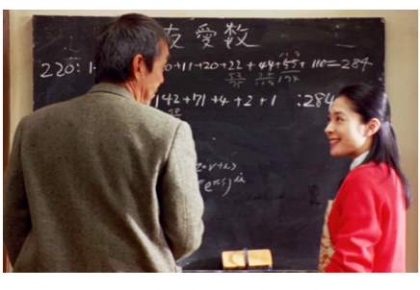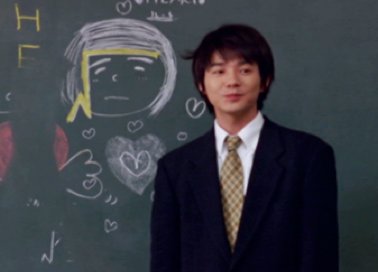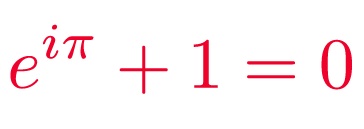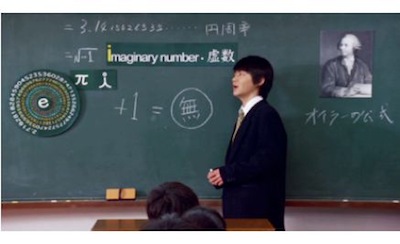The Professor's Beloved Equation
by Burkard Polster and Marty Ross
The Age, 19 August 2013

Melbourne’s iconic Writers Festival begins on Thursday, and in anticipation of the coming literary feast we would like to devote this column to discussing a truly wonderful … movie. Well, a wonderful movie and a wonderful book.
The Housekeeper and the Professor is a prize-winning novella by acclaimed Japanese author Yoko Ogawa. It is the story of an aging mathematician and the housekeeper who comes each day to look after him. The other main character is the housekeeper’s young son, whom the Professor affectionately nicknames Root.
The story is Groundhog Day in reverse: the Professor’s memory stopped decades earlier and he can only remember anything new for eighty minutes, after which he forgets. Each morning the housekeeper must introduce herself afresh. Each morning the Professor responds by asking for the housekeeper’s shoe size (24) and telephone number (5761455), going on to explain the mathematical significance of both.
The housekeeper narrates the story, describing how she and Root come to understand and to care for the Professor. They connect to him through mathematics (and baseball), an impressive amount of which makes its way into the story. There are amicable numbers (pictured above), primes and twin primes, triangular numbers and much more.
The Professor is a patient teacher. He gently questions the housekeeper and her son, encouraging them to ponder the way mathematics works and to discover the answers for themselves.
The beautiful mathematics is engagingly presented, and Ogawa avoids the trap of trying to explain the beauty. As the Professor declares, explaining why a formula is beautiful is like trying to explain why the stars are beautiful.
Early on in the story the professor asks Root about the square root of -1:
“So you’d need to get -1 by multiplying a number by itself?” Root asked. He had just learned fractions at school, and it had taken a half-hour lecture from the Professor to convince him that numbers less than zero even existed, so this was quite a leap. We tried picturing the square root of negative one in our heads …
He didn’t press us. On the contrary, he fondly studied our expressions as we mulled over the problem.
“There is no such number,” I said at last, sounding rather tentative.
“Yes there is,” he said, pointing at his chest. “It’s in here. It’s the most discreet sort of number, so it never comes out where it can be seen. But it’s here.” We fell silent for a moment, trying to picture the square root of minus one in some distant, unknown place.
Perhaps the Professor should have pointed to his head rather than his heart. On second thought, perhaps not.
The above may misleadingly suggest that The Housekeeper and the Professor is merely a very good textbook. In fact, Ogawa has written a very good, very touching story; the mathematics is simply the means to tell that story. It’s the Professor’s gentle kindness and his pure love of mathematics that endears him to the housekeeper and her son, and to the reader.
In 2006 Ogawa’s novel was made into a movie, The Professor’s Beloved Equation. In contrast to the novel, the movie is narrated by Root, grown up now and shyly beginning his very first lesson as a mathematics teacher. To introduce himself, Root tells his class the story of the Professor.

It is a clever and elegant framing device. With his students as audience, Root can slow down for the mathematical technicalities, teasing out the ideas in a clear and natural manner. We witness again the Professor’s love of mathematics, now instilled in Root, and in turn being passed on to Root’s students.
The “beloved equation” in the movie title (and in the original Japanese title of Ogawa’s novella) refers to the famous and beautiful equation discovered by the Swiss mathematician Leonhard Euler:

It is not at all surprising that the Professor loves Euler’s equation: all mathematicians do. The equation unites the five fundamental numbers of mathematics in one beautifully succinct truth. (We wrote about this equation when it appeared in a very impressive Google doodle.)
However, Euler’s equation also plays a critical and cryptic role in the story. At a pivotal moment the Professor writes down Euler’s equation, in order to express what he cannot convey with words. We’re left to ponder exactly what the Professor intended.

This column appears in the Education section of The Age, and so we feel some obligation to present and explain mathematical ideas, to help you with your homework. However it is important at times to take a break. Today, we encourage you to set aside your homework for an evening, to kick up your feet and to immerse yourself in a wonderful story. It may well be more educational, and it will almost certainly be more rewarding.
Burkard and Marty will appear at the Melbourne Writers Festival, Sunday August 25 and Thursday August 29. For more information and for tickets, please visit the MWF website.
Burkard Polster teaches mathematics at Monash and is the university's resident mathemagician, mathematical juggler, origami expert, bubble-master, shoelace charmer, and Count von Count impersonator.
Marty Ross is a mathematical nomad. His hobby is smashing calculators with a hammer.
Copyright 2004-∞ ![]() All rights reserved.
All rights reserved.